How to Choose the Right Pot for Your Succulent
I absolutely love shopping online for succulents and gardening supplies. If you aren't already saving money by comparing prices online, give it a try! Here are six of my favorite things that I have purchased online as I build my own succulent oasis:
I admit that my first choice of succulent pots was a bust. I took a trip to my local thrift store and grabbed some of the most random containers. While succulents can look amazing in just about anything, I quickly realized that not just anything can accommodate the needs of succulents.
So, I went back to the drawing table and started experimenting with different pots. I have used plastic, glass, clay, terracotta, and many other materials for my succulents at this point, and I can honestly say that yes, these seemingly easygoing plants are in fact quite picky.
If you’re like most gardeners, you probably have a few succulents scattered around your home. These low-maintenance plants are easy to care for and add a touch of greenery to any space. But if you want your succulents to thrive, it’s important to choose the right pot.
I’m going to share with you some things to look for when choosing a pot for your succulent and give you a list of my top picks (after much trial and error).
Things to Look for When Choosing a Pot for Succulents
When choosing a pot for your succulent, there are a few things you’ll want to keep in mind. Instead of just grabbing what looks cute, consider the following factors:
Size
The size of the pot is important. A pot that’s too big will make it difficult for the roots to get the water and nutrients they need, while a pot that’s too small will stunt the plant’s growth.
You’ll want to make sure the pot is large enough to accommodate the roots of the plant, but not so large that the plant becomes top-heavy and unstable. A good rule of thumb is to choose a pot that is 1-2 inches wider than the diameter of the plant’s current pot.
Depth
Some succulents need the space to stretch their roots in order to hold the plant itself upright and nourish it properly. If the pot is too shallow, the roots will be constricted and the plant will eventually suffer.
On the other hand, a pot that’s too deep can make it difficult for the plant to get the water it needs. The roots will not be able to bring moisture to the leaves, and the growing process will halt. A good depth for most succulent pots is 4-6 inches.
Material
Succulents can grow in a variety of materials but prefer pots that allow for good drainage. While some materials, like plastic, are lightweight and inexpensive, they don’t allow the roots to breathe unless there are sufficient holes in the pot.
Some of the best materials for succulent pots include unglazed clay and terracotta. These materials are porous, which means they absorb and release moisture, providing the roots with the air they need to stay healthy. Concrete pots can also work well for succulents when properly prepared.
Drainage
One of the most important things to look for in a pot is sufficient drainage. Succulents are sensitive to overwatering and can quickly rot if their roots are constantly sitting in water. Make sure the pot you choose has drainage holes so excess water can escape. If it doesn’t, you can always drill your own holes.
Wide Mouth
And finally, choose a pot with a wide opening so you can easily access the plant when it needs watering or repotting. Additionally, the top of the soil needs sufficient airflow.
Plus, when you plant some baby succulents, it’s easy to forget how large they may grow! You don’t want to risk hurting them if your pot doesn’t have a wide enough mouth to remove them.
Related: 100+ Types of Succulents with Pictures
5 Best Materials for Succulents Pots
Now that you know what to look for in a pot for your succulent, here are some of the best potting materials for succulents.
1. Terracotta
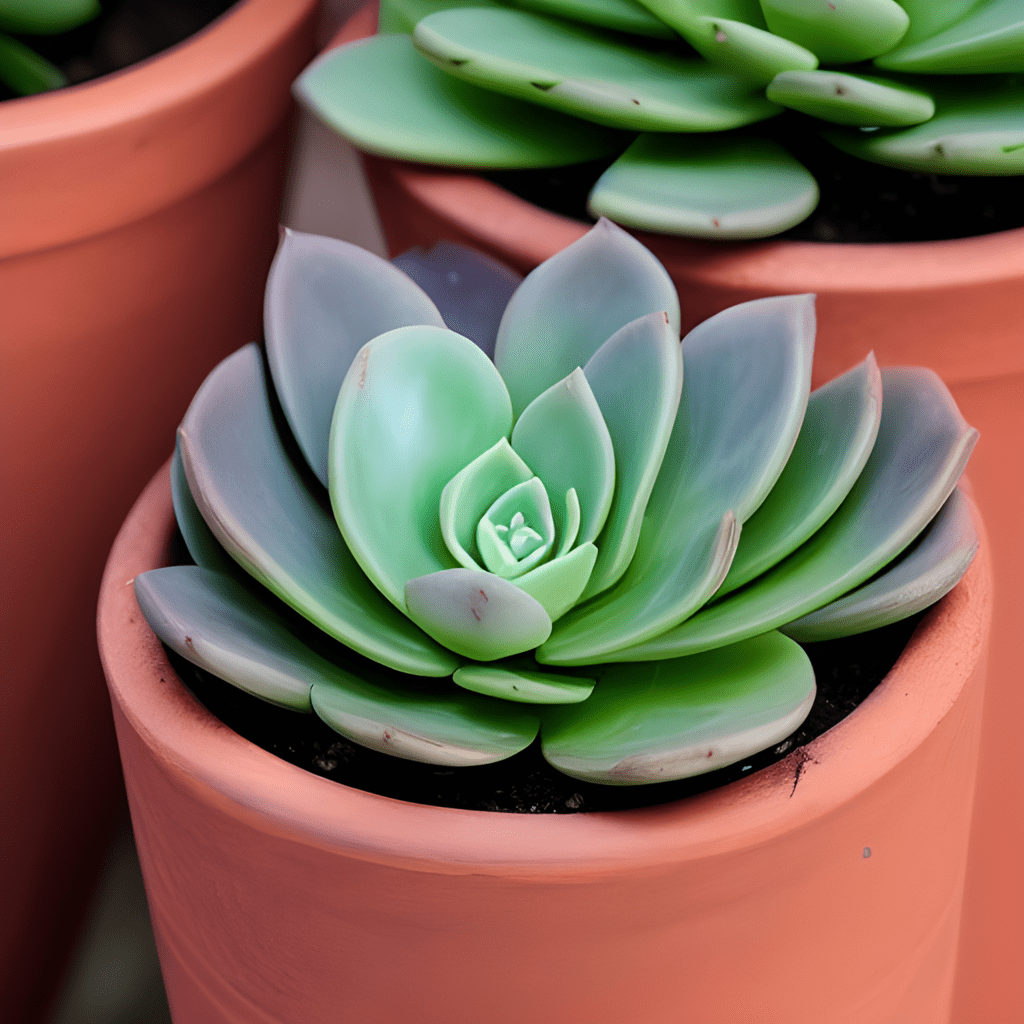
Terracotta pots are classic choices for succulents. They’re inexpensive, widely available in many sizes, and made from natural materials that are safe for plants. Plus, they offer good drainage and breathability, which is important for preventing root rot.
Truthfully, I put off purchasing terracotta for a long time because I wanted to focus on gorgeous glass terrariums. I quickly learned that glass isn’t a great long-term solution for succulents because it traps water in the bottom of the container.
Once I finally bought my first batch of terracotta pots, I realized that they are by far the most breathable material for succulents. Succulents need lots of air, so terracotta pots are perfect. When I water my succulents in terracotta pots, the whole pot becomes saturated with water from the inside out! This means the water can seep out of the pot from every angle and will quickly dry up the soil surrounding the roots.
Disadvantages of terracotta pots include their weight and the fact that they can break easily. Additionally, most terracotta pots are the classic orange color, which may not fit your aesthetic. However, you can find terracotta pots in a variety of colors now, including black and white, but they may be more expensive. And finally, because of the material, terracotta pots increase in price based on their size.
2. Clay
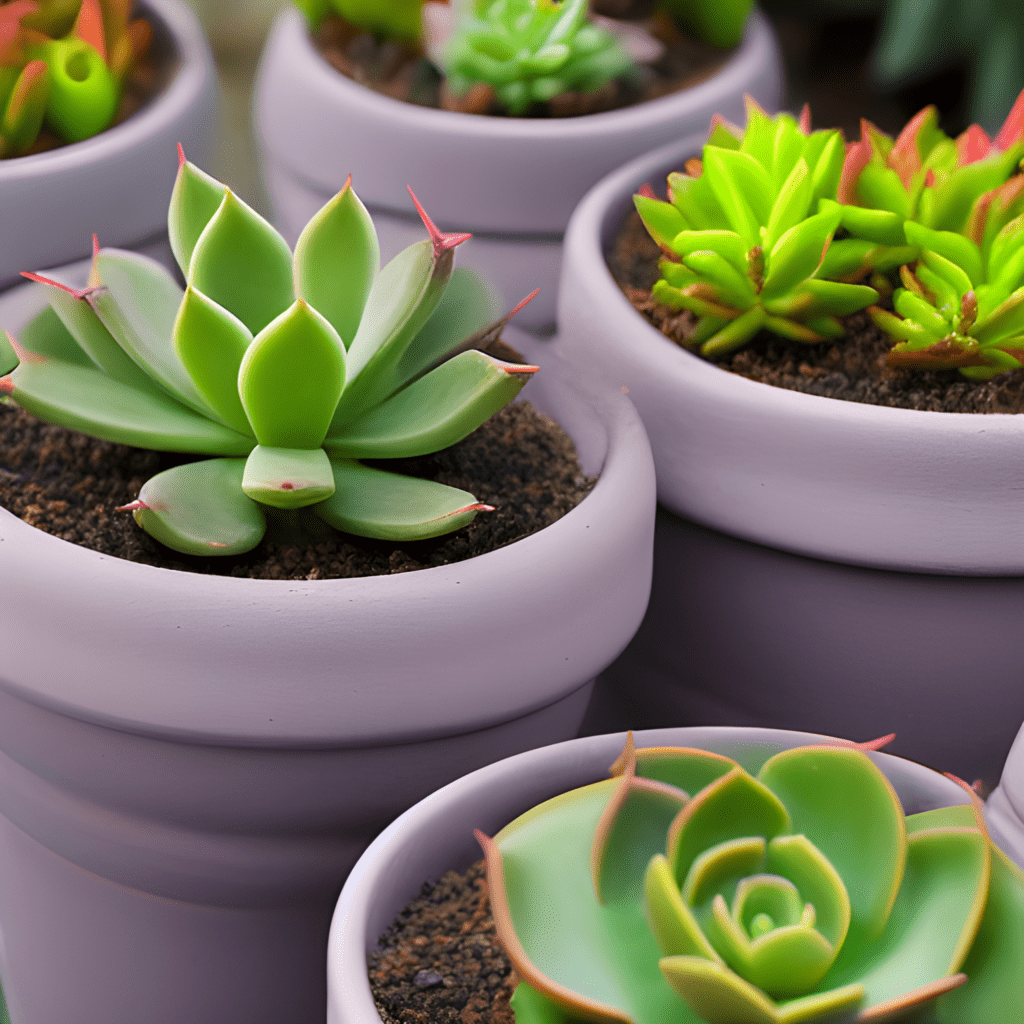
Clay pots are very similar to terracotta in that they’re made of natural materials, offer good drainage and breathability, and can be found in a variety of colors. However, clay pots often come glazed which keeps air from flowing freely through the material.
Unglazed clay pots are slightly more fragile than terracotta pots and may not last as long. But they are equally as breathable, making them a great choice for succulents. Clay pots come in many different colors, shapes, and sizes which means they can be easily incorporated into any design.
The biggest disadvantage of clay pots is that they can be expensive. Glazed clay pots, in particular, can be pricey–but those are the ones to avoid. Additionally, some clay pots don’t have drainage holes, so be sure to check before you buy!
If you’re looking for an eco-friendly option, go with clay. Clay pots are made from natural materials and often come in earthy colors that blend well with plants. They offer good drainage and aeration but beware that they can dry out quickly in hot weather.
3. Concrete
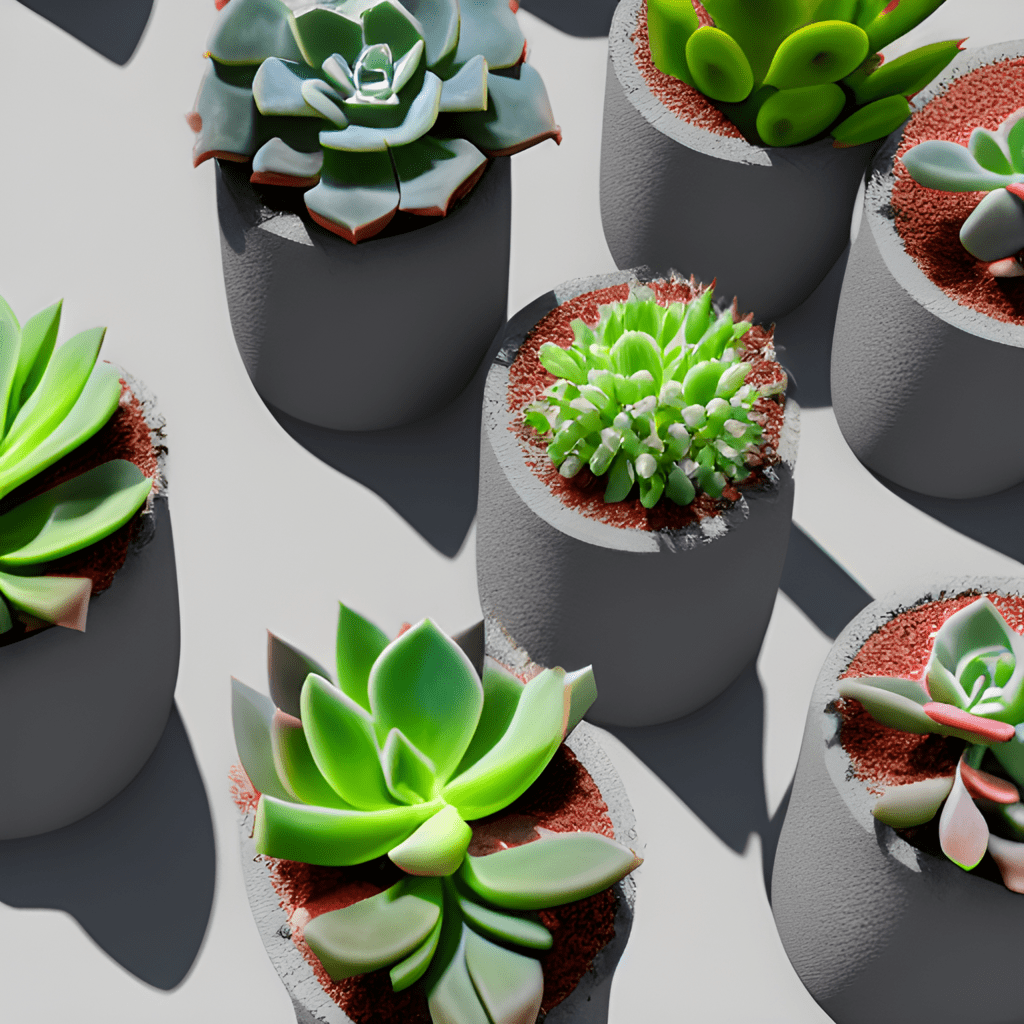
Concrete pots are a great option for succulents because they’re durable, offer good drainage, and come in a variety of colors and styles. They’re also much heavier than other potting materials, so they’re less likely to tip over.
The key to using concrete pots is to make sure they’re properly sealed so they don’t absorb too much water, yet not so watertight that they cause the soil to retain water. To prepare a concrete pot for succulents, start by sealing the inside and outside of the pot with a waterproof sealant. This will help prevent the pot from absorbing too much water, which can lead to root rot.
Once the concrete pot is sealed, you can drill drainage holes in the bottom of the pot. That way the water can still escape the soil.
When choosing a concrete pot, make sure it’s big enough for your plant to grow. Concrete pots are heavy, so you don’t want to have to repot your succulent every year. Additionally, choose a pot with a wide mouth so you can easily access the plant when it needs watering or repotting.
The disadvantages of concrete pots include their weight and the fact that they can be expensive. Additionally, concrete pots can crack in cold weather, so be sure to bring them indoors or protect them from the elements during the winter.
4. Wood
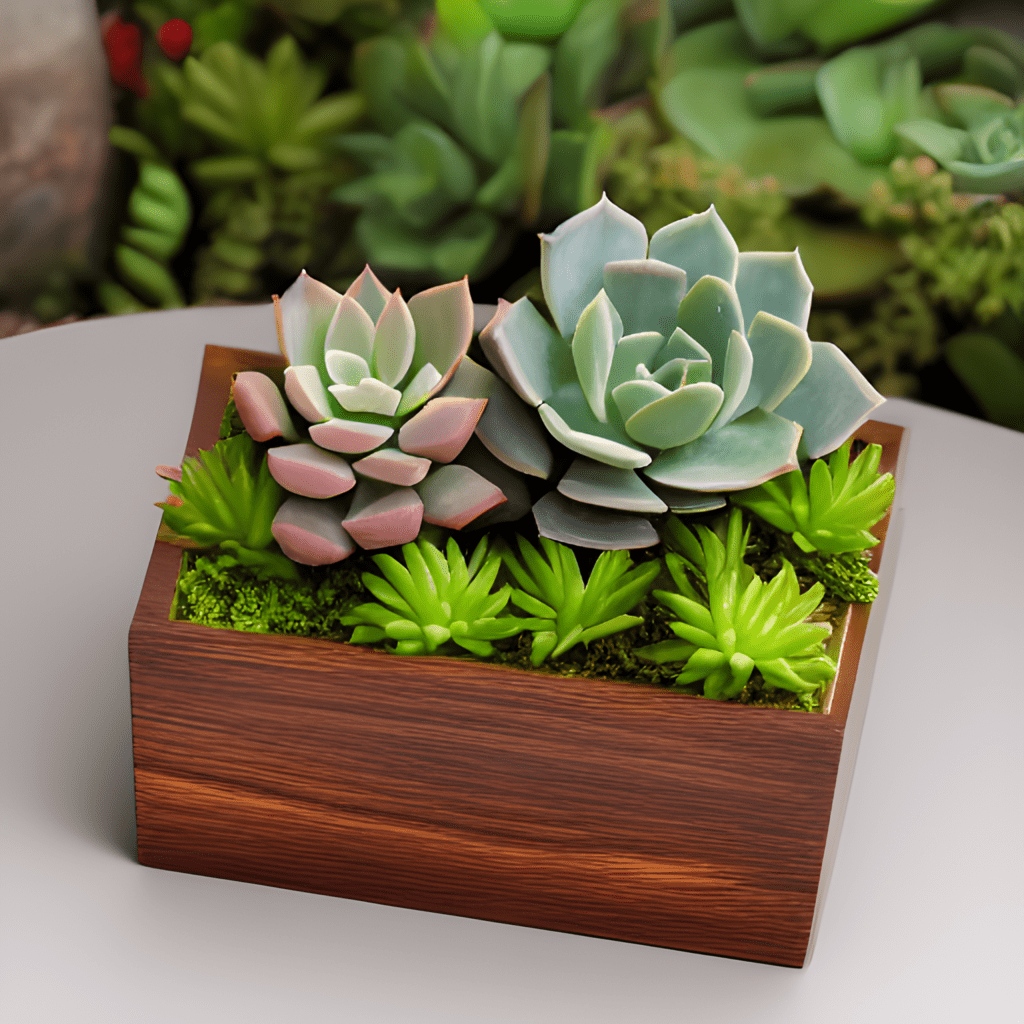
Wooden pots are another great option for succulents. They offer good drainage and aeration and can be found in a variety of colors and styles. When choosing a wooden pot, make sure it’s made of a rot-resistant wood like cedar or redwood. You’ll also want to make sure the pot has drainage holes in the bottom so the water can easily escape.
Many wooden planters include plastic liners with drainage holes. These can be a great option if you’re worried about the wood rotting. However, make sure the liner is perforated so the water can still drain.
The disadvantages of wooden pots include the fact that they can be expensive and difficult to find high-quality wooden options. Additionally, unsealed wooden pots are the most breathable option but they are not as durable as other potting materials and they can crack or chip over time. Finally, since wood is so porous, the planter can easily soak in water and lead to mold or rot.
5. Woven Basket
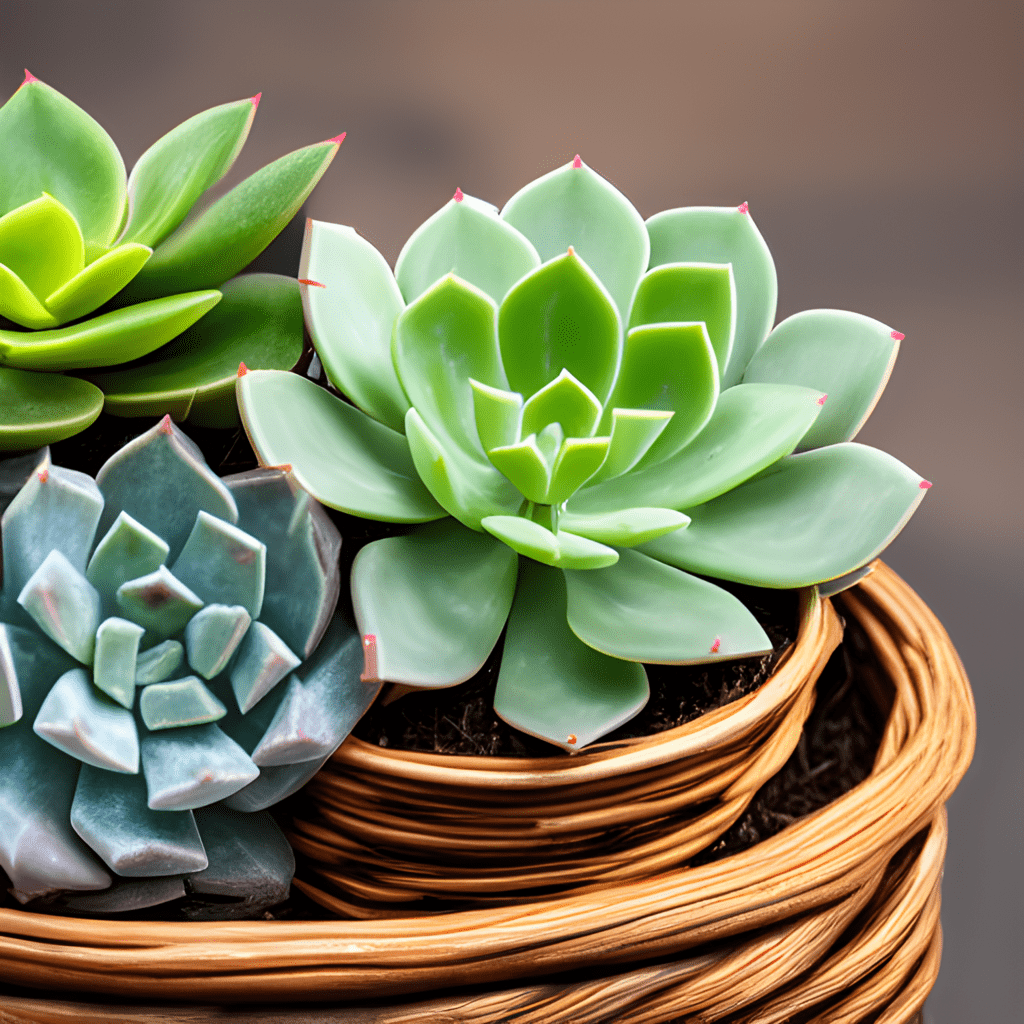
Woven baskets are a great option for succulents because they offer good drainage and aeration. Most baskets are made of natural materials like straw or wicker, which makes them environmentally friendly. And since they’re often used as decoration, they can add a touch of style to any room.
When choosing a basket for your succulent, make sure it’s big enough for the plant to grow. Additionally, look for baskets with a proper liner and drainage holes in the bottom. Using any basket that is not properly lined could lead to a mess any time you water your succulents.
Keep in mind that baskets are often not as durable as other potting materials. The weave can loosen over time, and the pot may eventually fall apart. Additionally, baskets can be expensive, but they sure add an amazing touch to any room.
5 More Succulent Pot Materials That Need Added Drainage
While succulents can live in almost any pot, there are certain materials that work only if extra drainage is added. Grab your drill and start making holes if you are interested in using any of these succulent pots.
6. Ceramic
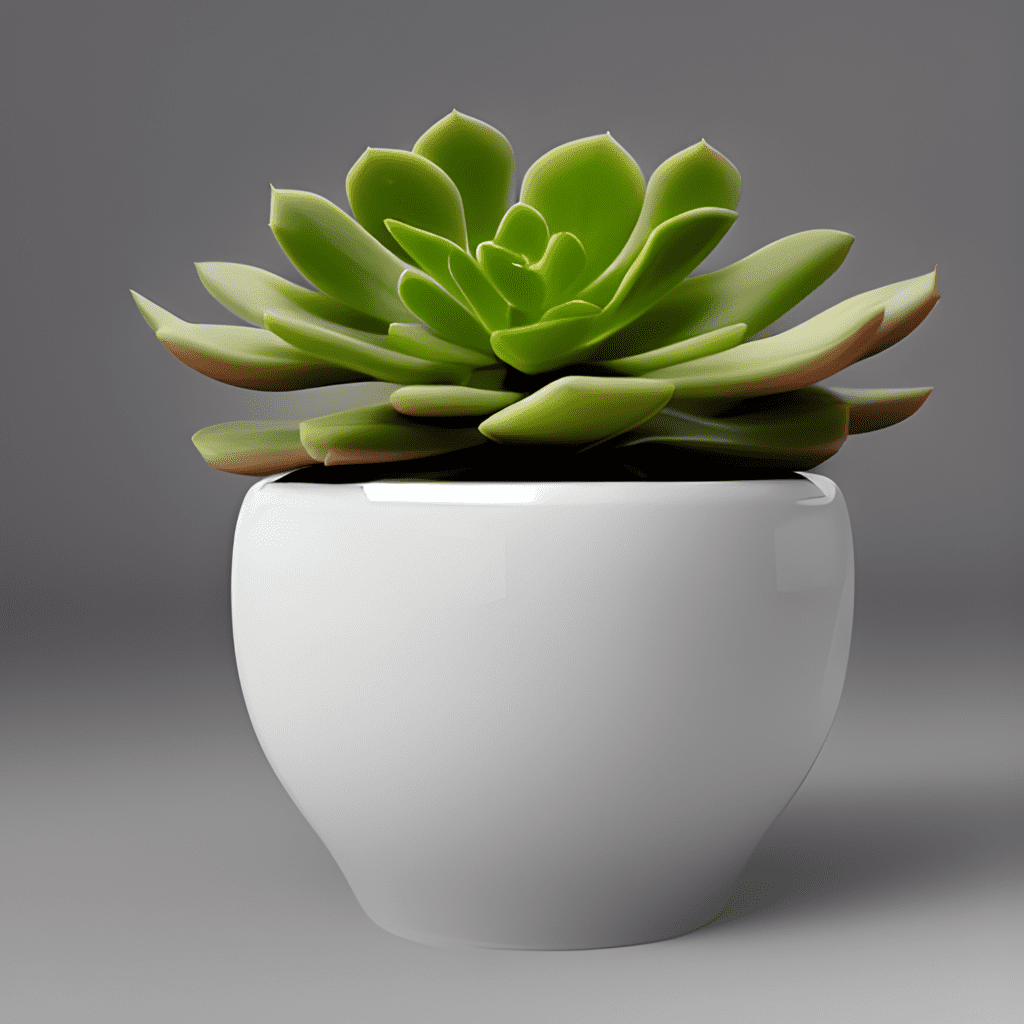
For something a little more modern, try a ceramic pot. Ceramic pots come in a variety of colors and styles to suit any decorating scheme. They’re also durable and easy to clean. Just be sure to choose one that’s unglazed on the inside so it won’t retain too much moisture. Additionally, the pot will need sufficient drainage with at least one hole per four square inches or so.
Ceramic pots with good drainage and aeration are a good choice for succulents, but be aware that there is a fine line between decorative and functional ceramics. Succulents need ceramic pots that are specifically designed with their needs in mind.
The main disadvantage of ceramic pots is that they can be expensive, especially if you choose a designer brand. Additionally, they’re not the most eco-friendly option as they’re often made with non-renewable resources. Finally, ceramic pots are breakable, so be careful when handling them. If you’re looking for a stylish pot that will last for years, go with ceramic. Just be sure to get one that’s unglazed on the inside and has good drainage.
7. Plastic
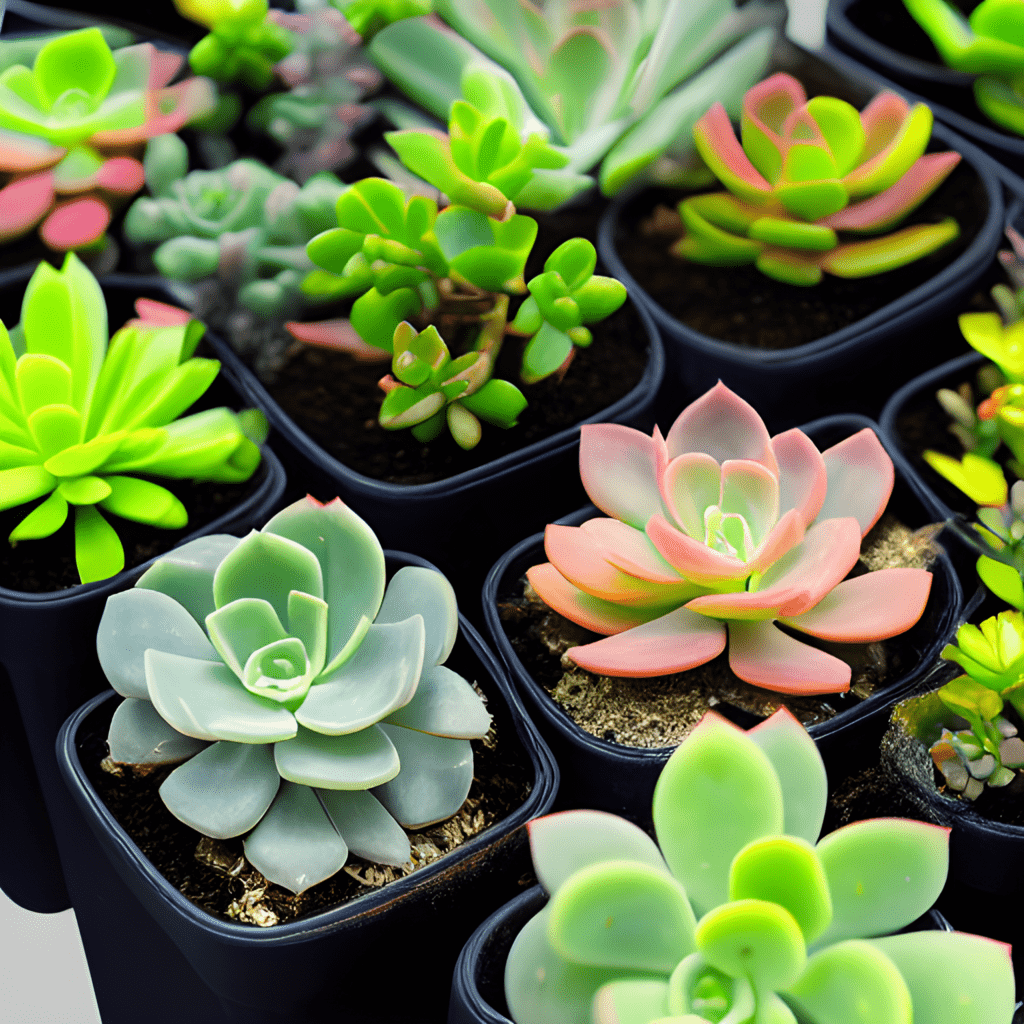
Plastic pots are a good option for succulents because they’re lightweight and inexpensive. Plus, they come in a variety of colors and styles. Even nurseries use thin plastic planters to grow and distribute succulents.
However, there are a few things to keep in mind when choosing a plastic pot.
The first is that plastic pots don’t offer much insulation, so the roots can get too hot in summer and too cold in winter. Additionally, plastic pots don’t offer much drainage or aeration, so they can cause the roots to rot. To combat these problems, choose a plastic pot that’s light in color to reflect heat and has several drainage holes. Additionally, make sure the pot is big enough for your plant to grow. You don’t want to have to repot your succulent more than once per year.
For something cheap and cheerful, go with plastic. Plastic pots are lightweight and easy to move around, which is great if you have kids or pets who might knock over your plants. Plus, they can even be clear or translucent, so you can see when your plants need watering. Just be sure to choose high-quality plastic that’s BPA-free and won’t leach toxins into the soil.
8. Glass
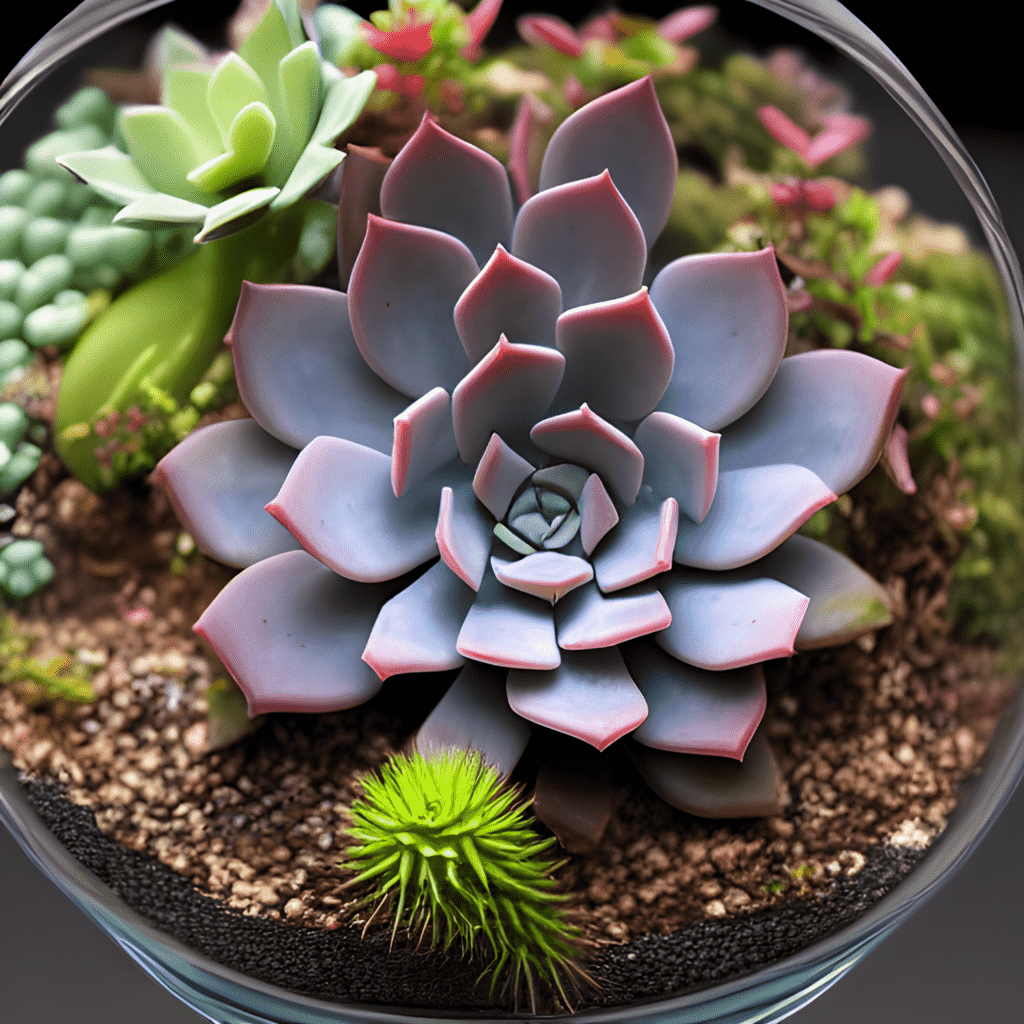
Glass terrariums are not the best option for succulents because they trap water in the bottom of the container. However, if you’re looking for a temporary home for your succulents, glass will work. Plus they make absolutely gorgeous succulent centerpieces for your dining room table.
For terrariums, I like to lay a thin layer of stones at the bottom of the container, and I make sure to use a gritty soil mixture that dries out quickly. I also change my watering habits significantly to be sure that my succulents in glass pots are not overwatered.
I like to line glass mugs with small plastic planters that have plenty of drainage holes. That way I can remove the liners from the mugs on watering days and let them dry out a bit before returning them to their homes.
When using glass pots, just make sure to choose one that’s big enough for your plant to grow. Glass is restrictive and completely sealed, so if the succulent’s roots reach the sides and bottom of the container, they are more likely to sit in too much water.
Related: 40+ Amazing Succulent Planter Ideas
9. Galvanized Metal
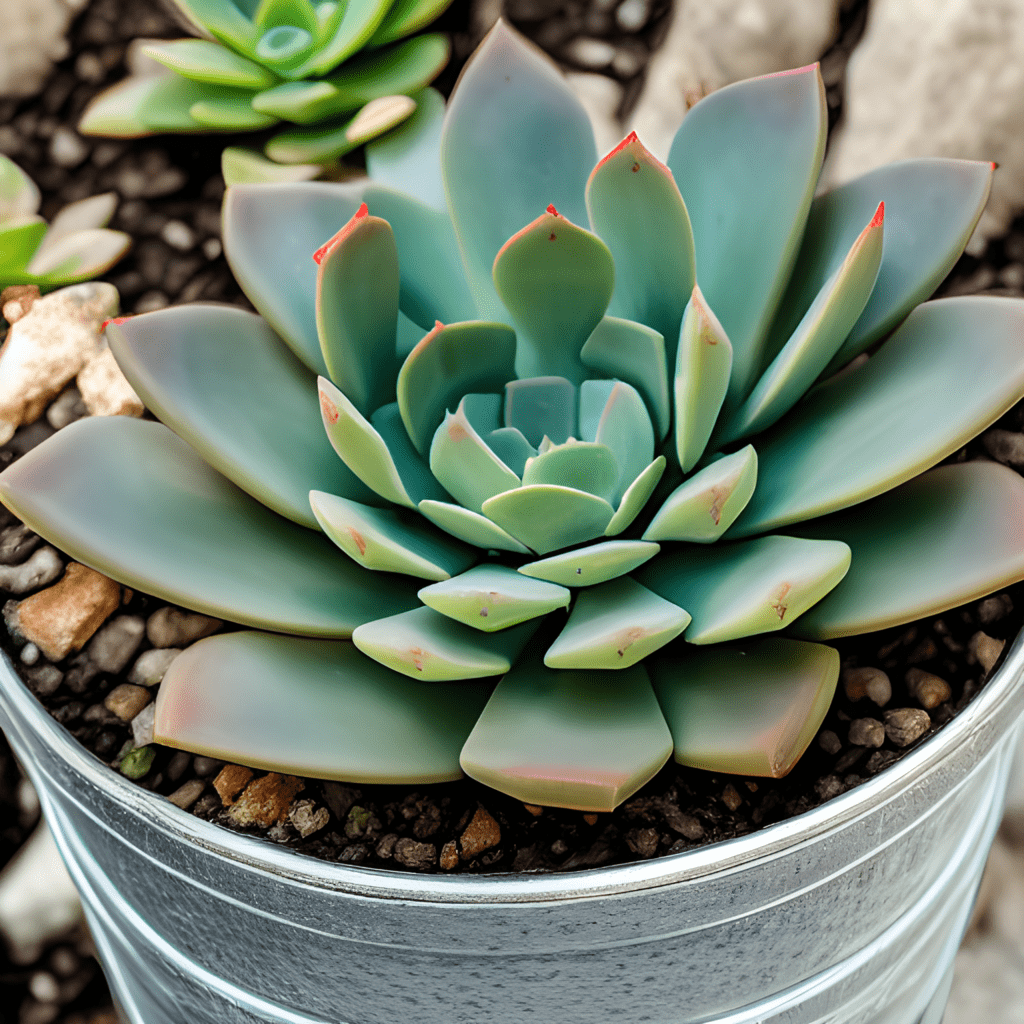
Galvanized metal pots are a popular option for succulents. They can be inexpensive depending on how large of a container you need. Galvanized metal is also a stylish choice that can add a touch of industrial chic to your home decor.
You can easily add drainage holes to galvanized metal pots using a drill and regular drill bit. The material is not as tough as regular metal. You will want to drill at least one hole per four to six square inches.
The main disadvantage of galvanized metal pots is that they can rust over time. To prevent this, make sure to choose a pot that’s made with zinc or another corrosion-resistant material. Additionally, be sure to clean the pot regularly to remove any dirt or debris that could cause it to rust.
10. Copper and Tin
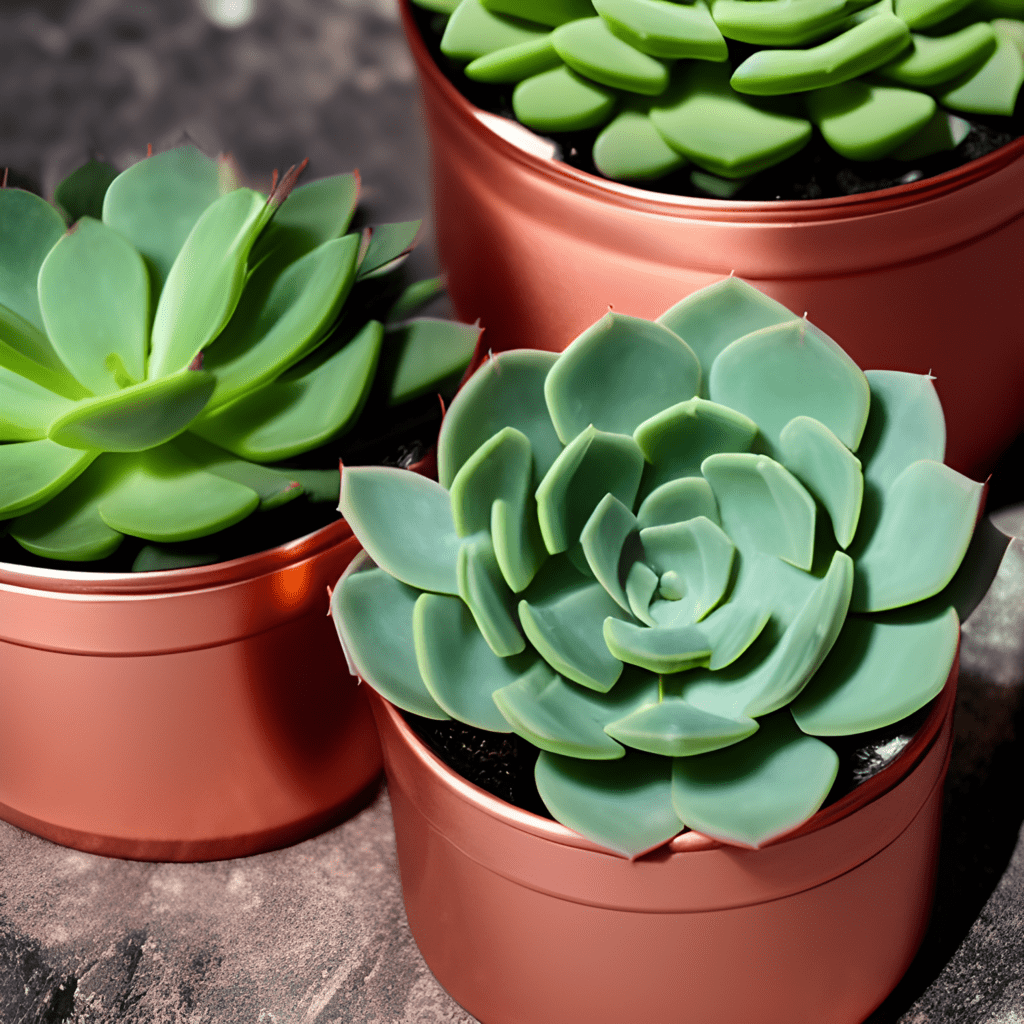
Copper and tin pots make beautiful homes for succulents. They can certainly add a touch of elegance to your decor. Copper and tin pots are available in a variety of sizes, but they’re often on the smaller side. This is because the metal can get very hot in direct sunlight, so it’s best to keep them as indoor pots or out of direct sunlight.
Copper and tin pots do not usually come with built-in drainage. You would need to add the holes yourself using a carbide drill bit. Additionally, copper and tin pots can be expensive. But if you take good care of them, they’ll last for many years.
Related: How to Get Free Succulents
Succulents Have Planter Preferences, Too
When it comes to succulents, the type of soil you use is just as important as the pot you choose. Succulents need well-draining soil so their roots don’t rot. The best soils for succulents are light and gritty.
You can find succulent-specific soil mixes at most garden centers, or you can make your own by mixing coarse sand, perlite, and potting soil. Whichever route you choose, make sure the soil is light and airy so it doesn’t compact around the roots of your plant.
No matter what type of pot you choose for your succulent, make sure it has drainage holes in the bottom and is wide enough to easily access the plant when it needs watering or repotting.
Remember: terracotta, clay, concrete, some wooden planters, and woven baskets are the best materials for succulents. Avoid placing your succulents in glass or galvanized metal as long-term solutions unless it has great drainage. With these tips in mind, you’ll be sure to find the perfect pot for your next succulent!
Related: Perlite for Succulents
